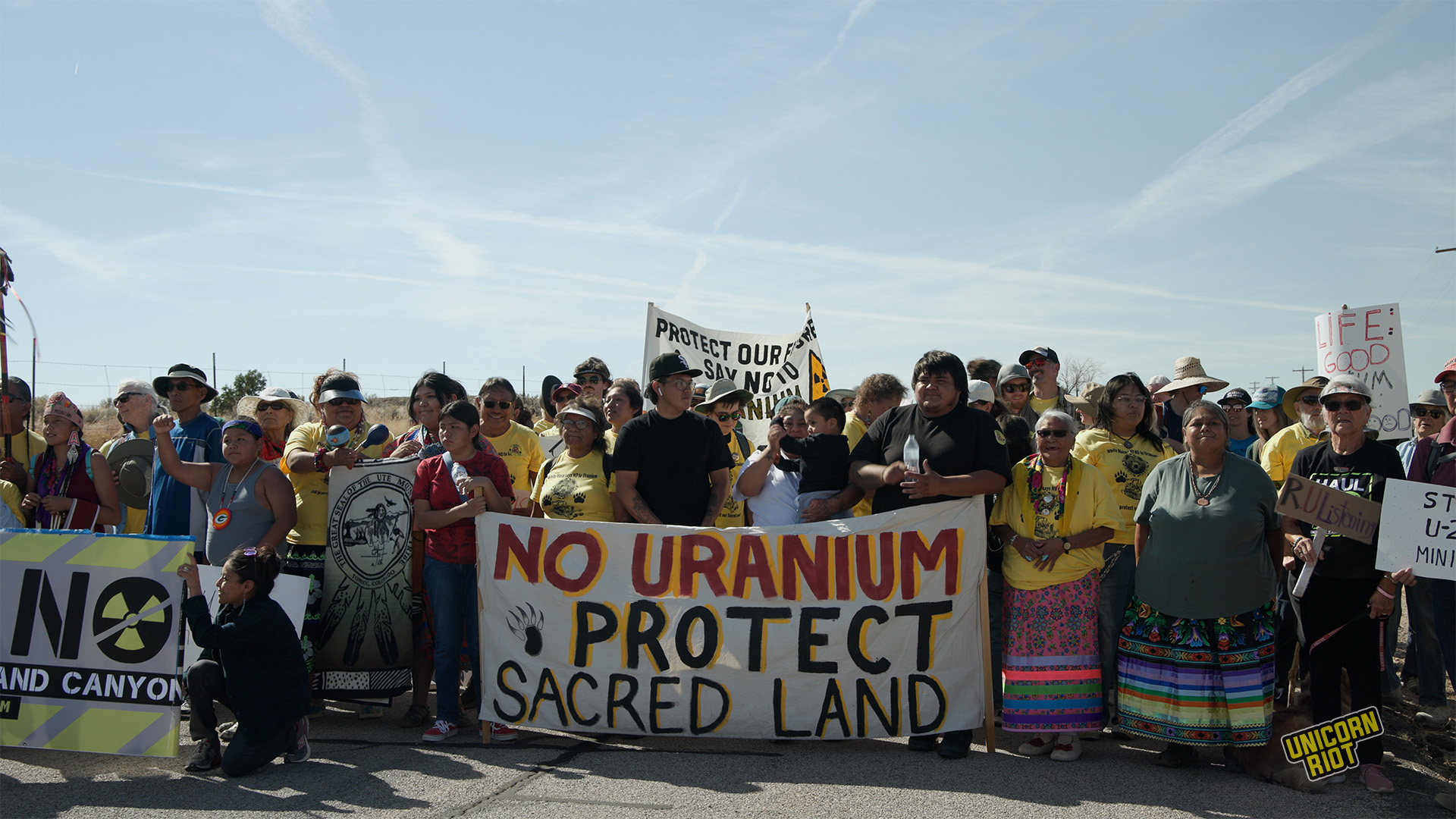Indigenous Spiritual Walk in Utah Protests Last Conventional Uranium Mill
White Mesa, UT — The White Mesa Mill was built in 1979 with plans to process uranium ore for 15 years. With the facility now well past its initial operational lifespan, the Ute Mountain Ute Tribe, other Indigenous tribes and allies continue their call for it to be shut down and cleaned up. On October 12, over 75 people participated in an annual spiritual walk in opposition to the mill, which is the last conventional uranium processing plant in operation in the United States.
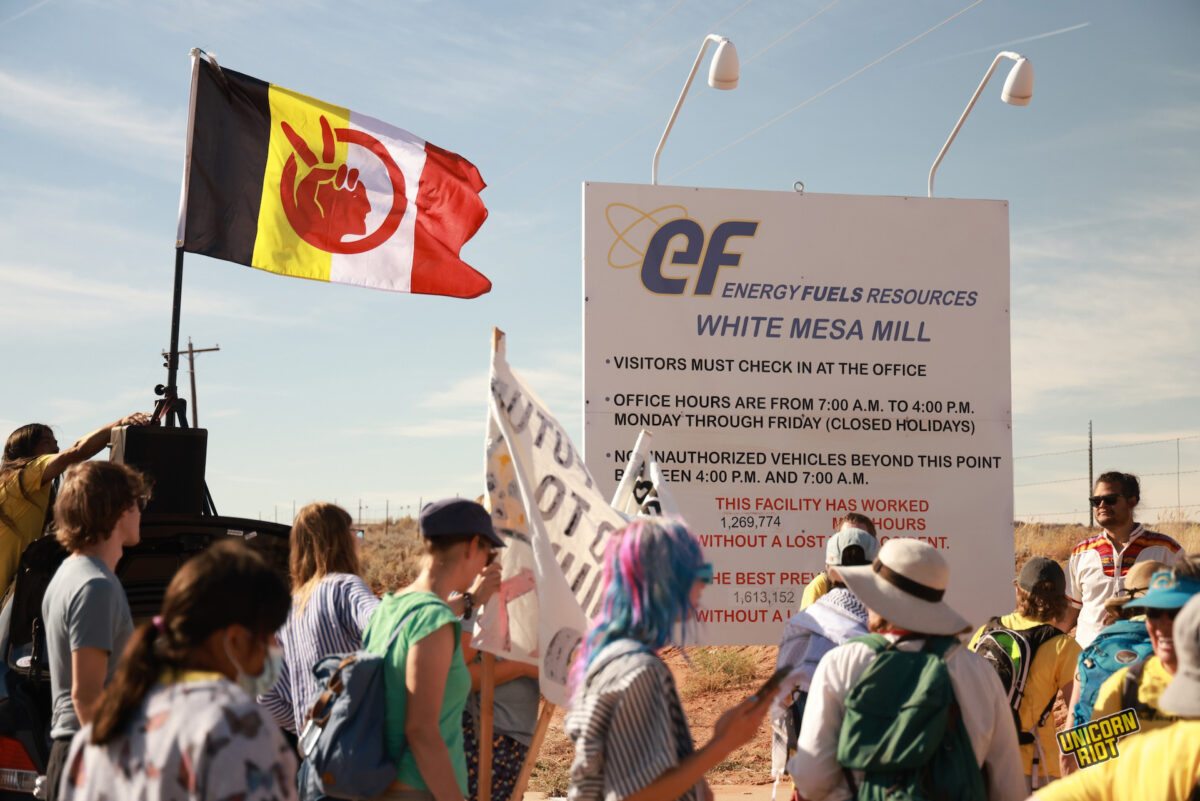
Participants met at the White Mesa Community Center in southern Utah at 11 a.m., then walked five miles north on the shoulder of U.S. Highway 191 to rally outside the mill. Throughout the hours-long walk, Unicorn Riot spoke with attendees about their opposition to the 45-year-old mill owned by Energy Fuels Inc.
Below is the first part of our four-part video series of our coverage from the event — Voices from White Mesa, Part 1: “Don’t Nuke My Culture.” Watch part two here, part three here, and part four here.
Local resident and organizer Raymus Vijil has helped with the annual walk for about five years. He spoke to Unicorn Riot about the health impacts of the mill. “We’re losing a lot of elders due to health issues,” said Vijil.
Vijil also mentioned the impact on Indigenous youth: “A lot of our younger tribal members now have asthma.” Vijil added that “none of the younger generations my age had asthma growing up, so it’s fairly new to each and every one of us.”
There have been multiple studies showing the correlation between human exposure to uranium and health effects such as asthma. In one study published in January 2024, urine samples were taken from over 13,000 participants and the findings “demonstrated that the urine U[ranium] level was positively correlated with asthma prevalence in the whole population of the US.”
“The results of this study not only confirmed the association between urinary U levels and the incidence of asthma in adults but also were the first to reveal that asthma prevalence in adolescents and children (<18 years) positively correlated with urinary U levels.”
“Association between urine uranium and asthma prevalence” study by Dongdong Huang and Saibin Wang
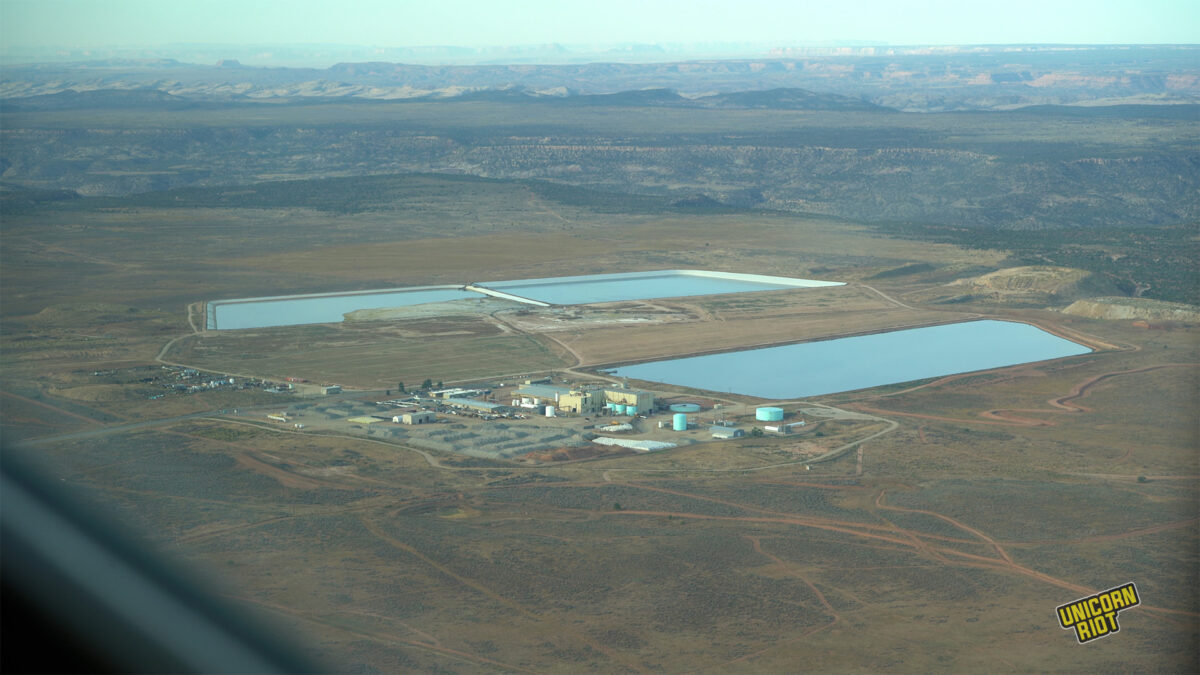
According to a review of scientific journal studies about health risks of uranium contamination, published in Environment International in December 2020, “Uranium can accumulate in the human body through the inhalation of gaseous and aerosol uranium, ingesting water or food, and dermal contact, and the acute or chronic overexposure of uranium can damage, for example, kidney, bone, liver, brain, and lungs.”
During the rally outside the mill, Malcolm Lehi, the White Mesa Council Representative, told the crowd about a community member who told Lehi that he has cancer. “It’s heartbreaking,” said Lehi. The community member added that the first thought from the doctors was that it could be because of the mill. “So that thought, you know, haunts me since the day he told me that. And then he tells me, I don’t know how long I’m gonna live,” Lehi shared with the crowd.
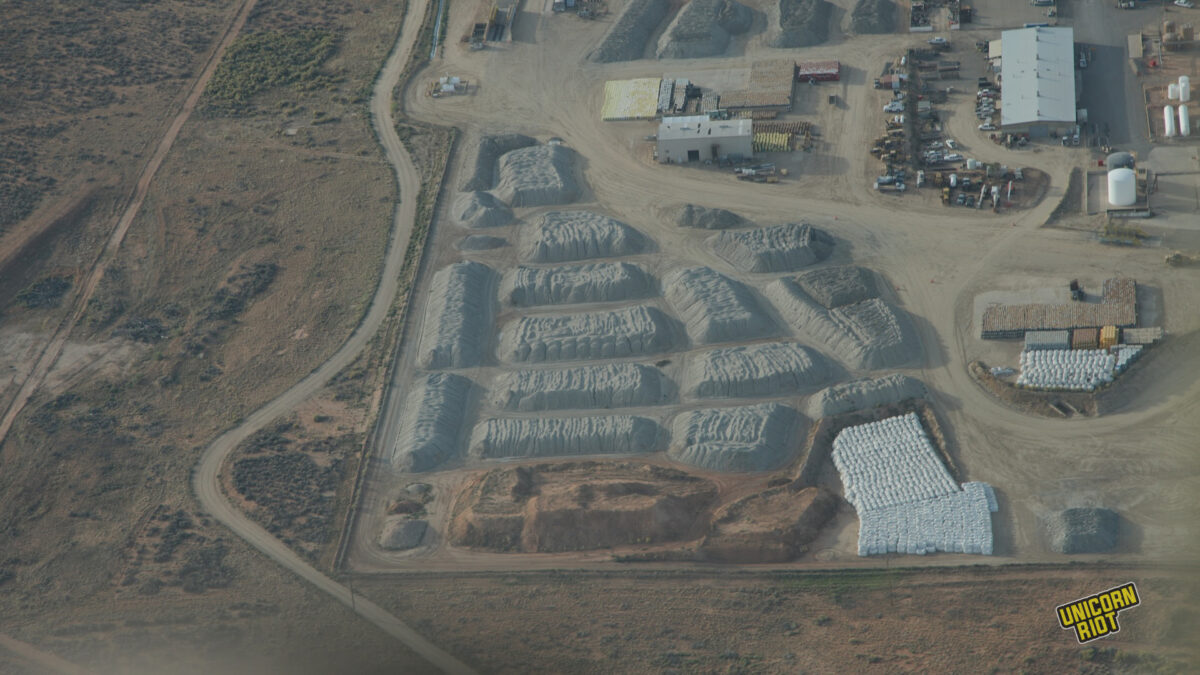
During a rally at the Utah State Capitol on October 4, Scott Clow, the environmental programs director for the Ute Mountain Ute Tribe, said, according to his research, “The shallower aquifer underneath the mill that’s about 100 feet deep is being polluted by the uranium mill.”
In addition to the health effects and pollution, when the mill was constructed, hundreds of sacred sites were destroyed and desecrated, including pithouses, kivas, and burial sites.
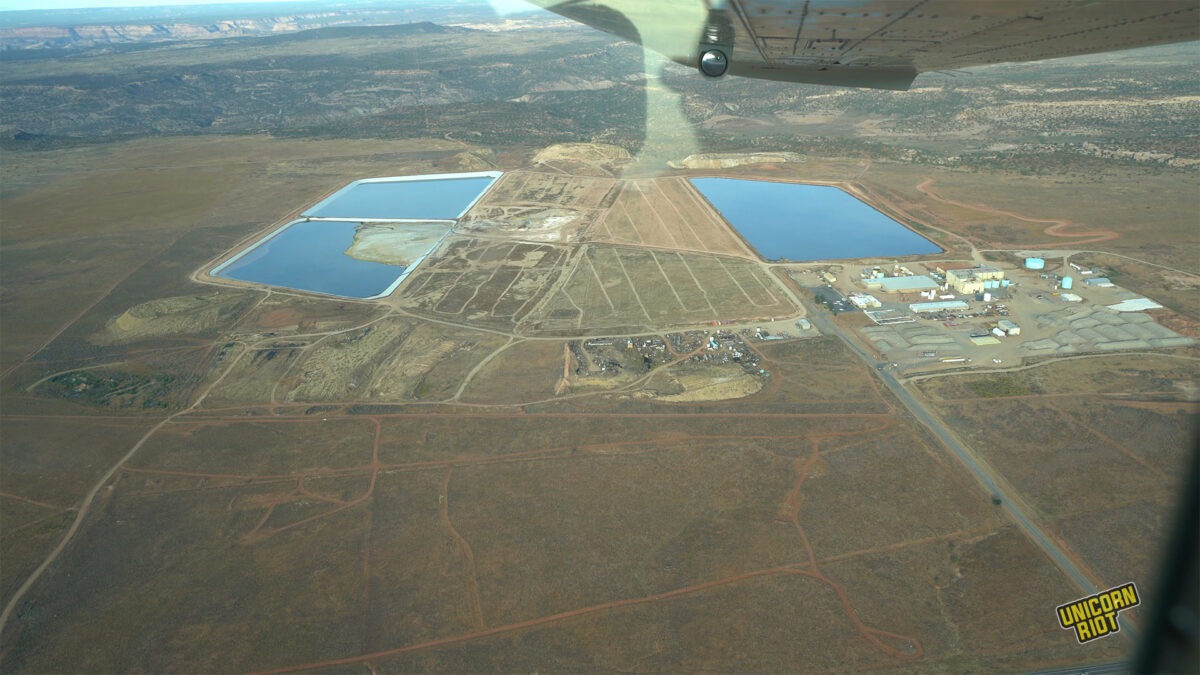
Lori Goodman, a retired board member of Diné CARE, spoke to Unicorn Riot about how Indigenous communities are seen by some as “disposable.”
“This whole misinformation of nuclear being clean only because of where they get the uranium and where they dump it — where the community people are not seen.”
Lori Goodman
Below is the second part of our four-part video series of our coverage from the event — Voices from White Mesa, Part 2: “We Are One People.”
Carl Moore spoke with Unicorn Riot during the spiritual walk about Indigenous sovereignty: “If Indigenous people say ‘no,’ that should be the end of the conversation, but that’s not what happens here in Turtle Island and the so-called United States of America.”
Below is the third part of our four-part video series of our coverage from the event — Voices from White Mesa, Part 3: “We’re Here to Say No.”
Yolanda Badback, lead organizer of the annual White Mesa Spiritual Walk and White Mesa Concerned Community cofounder, spoke at the rally outside the White Mesa Mill: “I will always do this spiritual walk annually until I get my goal achieved is by cleaning up the mill or closing the mill down.”
Below is the fourth part of our four-part video series of our coverage from the event — Voices from White Mesa, Part 4: “I Love My Community.”
Nuclear’s Expanding Future
Uranium prices have been near or above $100 per pound for over a decade, and with the Biden Administration’s goal of having the country’s electricity fully provided by “clean” power by 2035 (with incentives and funding for companies), the nuclear industry is booming.
The Biden Administration’s Nuclear Rush (and the Corporations Benefitting)
The U.S. Department of Energy shared its intent in February 2022 to implement a $6 billion “Nuclear Credit Program” to “help avoid premature retirements of nuclear reactors across the country.”
On September 30, 2024, the Biden Administration announced it was providing up to $1.52 billion to Holtec Palisades to reopen their nuclear power plant in Covert Township, Michigan.
Less than a month later, on October 16, the Biden Administration opened applications for “up to $900 million in funding to support the initial domestic deployment of Generation III+ (Gen III+) small modular reactor (SMR) technologies.”
On the same day as the federal funding applications opened, Amazon announced it signed “three new agreements to support the development of nuclear energy projects,” which also include Small Modular Reactors or SMRs — a smaller version of traditional nuclear reactors. Amazon touts SMRs as “an advanced kind of nuclear reactor with a smaller physical footprint, allowing them to be built closer to the grid.”
Two days earlier on October 14, 2024, Google signed a deal with Kairos Power for the energy company to build SMRs because, according to Google, “the grid needs new electricity sources to support AI technologies.” The nuclear reactors are expected to be fully online by the end of 2035.
In late September, Microsoft signed a 20-year deal with Constellation Energy to reopen Three Mile Island in 2028 to power Microsoft’s cloud computing and artificial intelligence programs.
Uranium mines are also on an upswing.
The Sunday Mine Complex, owned by Western Uranium & Vanadium Corp., plan to have mining operations restart in early February 2025. Uranium Energy Corp is reopening mines in Texas and Wyoming. Energy Fuels’ Pinyon Plain Mine near the Grand Canyon’s South Rim entrance reopened in 2024, as well as two of their mines in Utah — La Sal and Pandora.
The White Mesa Mill won’t be the only conventional uranium mill left in the U.S. for long.
Western Uranium & Vanadium Corp. is planning to build at least two mills to primarily process uranium and vanadium, one in Green River, Utah, and one in Montrose County, Colorado. CEO George Glasier told the Salt Lake Tribune the mill will be “a tenth the size of the White Mesa Mill,” yet will produce a similar amount of uranium. The mill isn’t expected to be completed for several years.
Isoenergy Ltd. bought Anfield Energy Inc. in early October, and wants to reopen the Shootaring Canyon uranium mill in Utah that it just acquired to begin processing uranium ore in 2026.
Nuclear’s boom isn’t confined to the U.S. Last year, at the U.N. Climate Change Conference, or COP28, member countries pledged to triple global nuclear energy capacity by 2050.
The Future Health of White Mesa Residents
In June 2022, the Environmental Protection Agency gave members of the Ute Mountain Ute tribe living in White Mesa a $75,000 grant to design a study that will be conducted with the Centers for Disease Control and Prevention. The study will analyze tribal members’ health data and environmental conditions to see if any links can be made to the White Mesa Mill.
While results are expected in 2025, and may end up showing clear links from the currently operating mill to devastating health and environmental effects, it’s unknown what consequences or measures of accountability will come from the results.
However, right now, members of the White Mesa community are seeing and feeling effects of an almost 50-year legacy that they never agreed to bear the brunt of, and the industry that continues to hurt them seems to only be growing.
Insurmountable or not, Yolanda Badback and the other members of White Mesa Concerned Community won’t stop actively opposing the mill.
“Some days I feel like giving up, but I know giving up isn’t the option of what I want because I want to achieve my goal.”
Yolanda Badback
Unicorn Riot covered a press conference and rally on October 4 at the Utah State Capitol, where members of the White Mesa community said that since the uranium mill’s presence in their area, they’ve seen higher rates of cancer, devastation of plant and animal life, and severe pollution of their air, water and land.
Please consider a tax-deductible donation to help sustain our horizontally-organized, non-profit media organization:

Follow us on X (aka Twitter), Facebook, YouTube, Vimeo, Instagram, Mastodon, Threads, BlueSky and Patreon.
